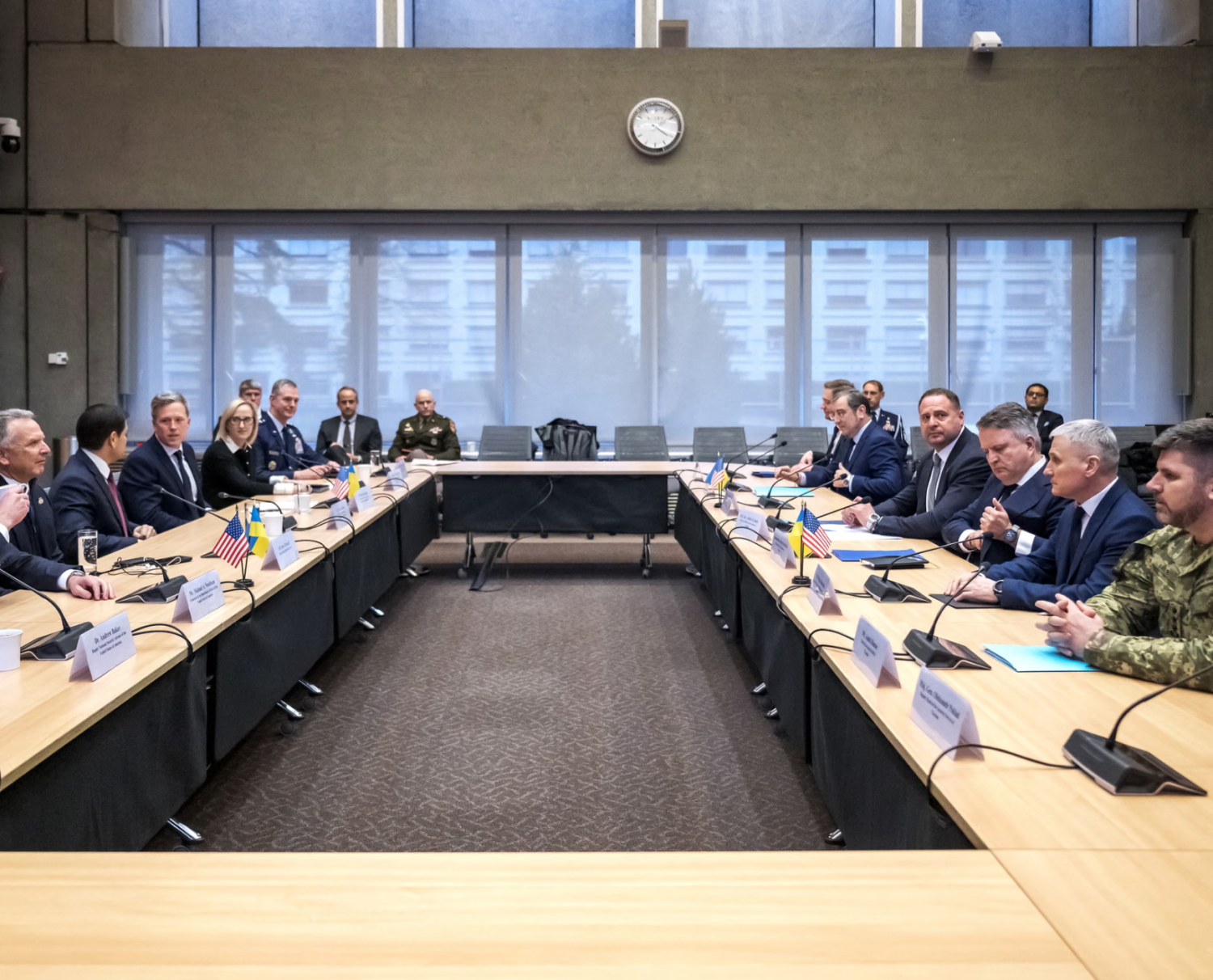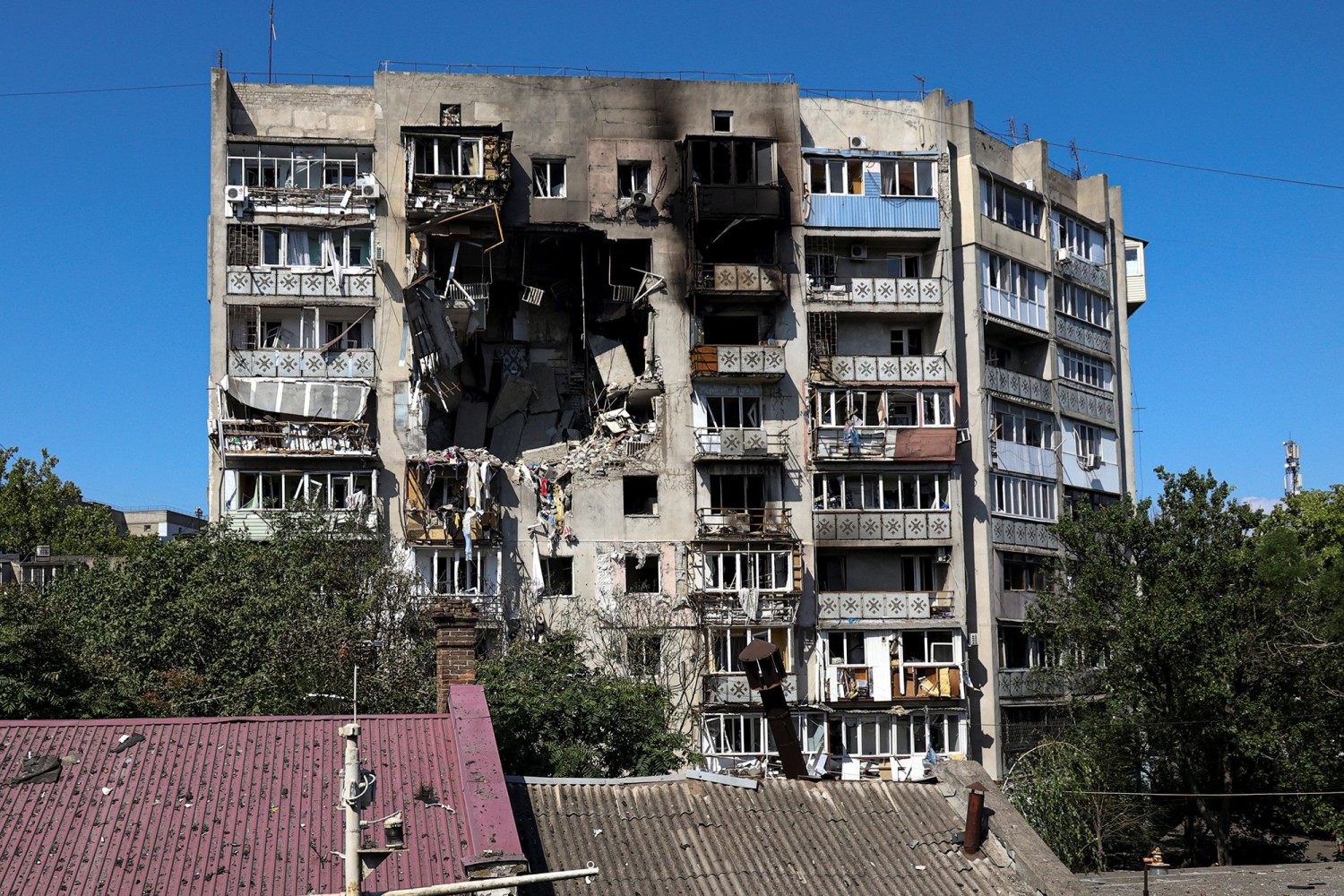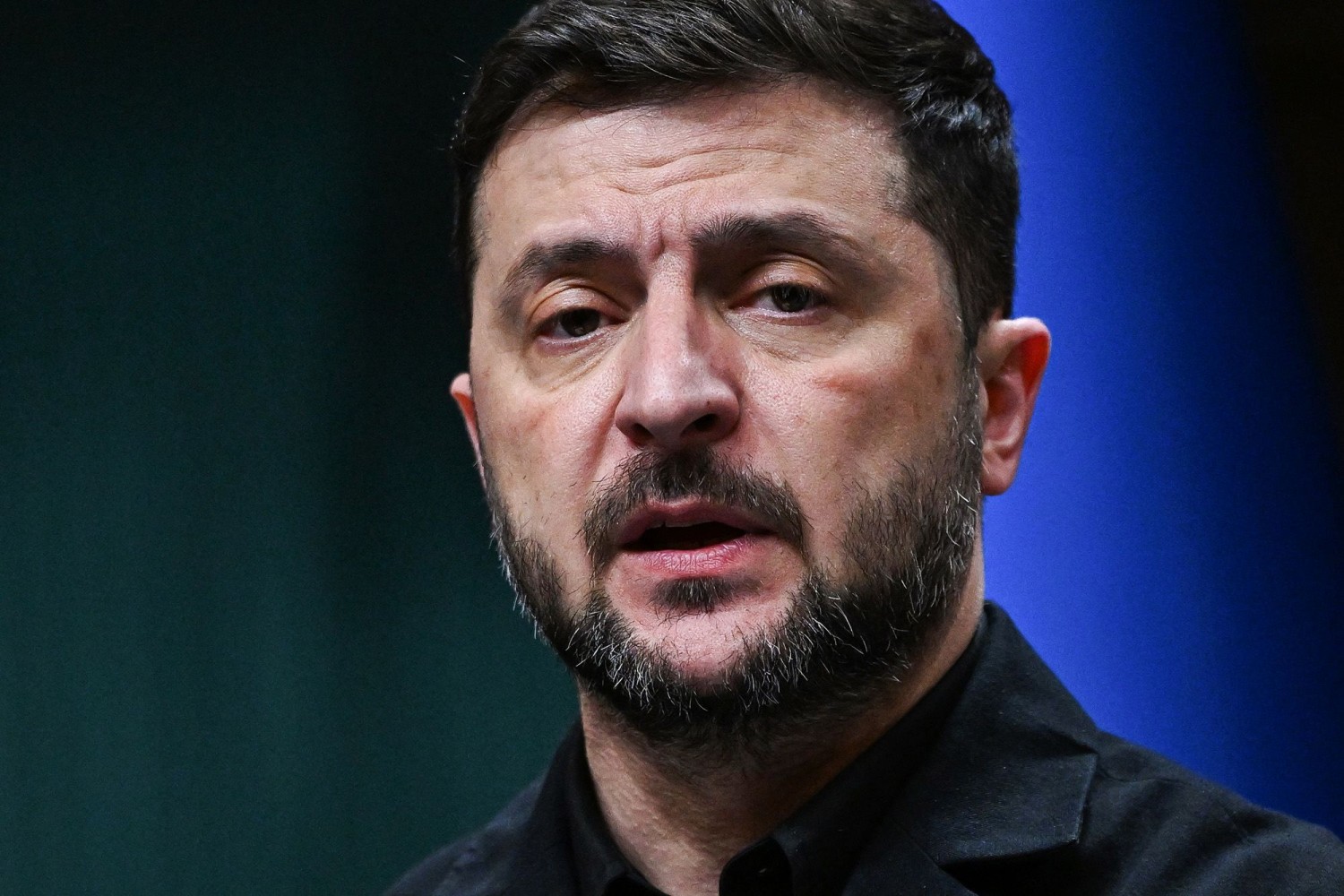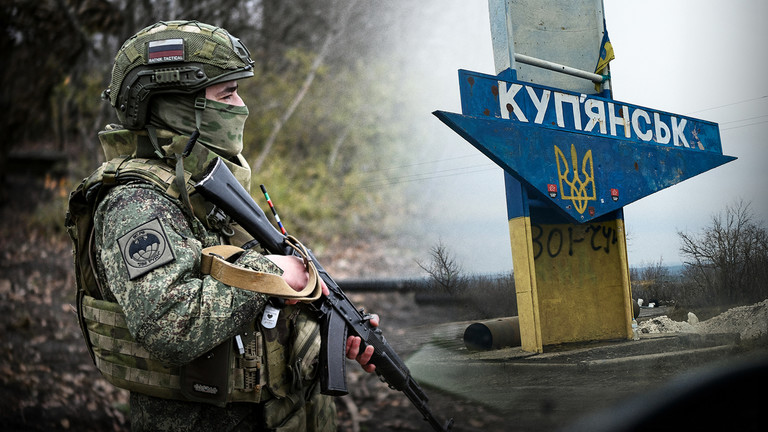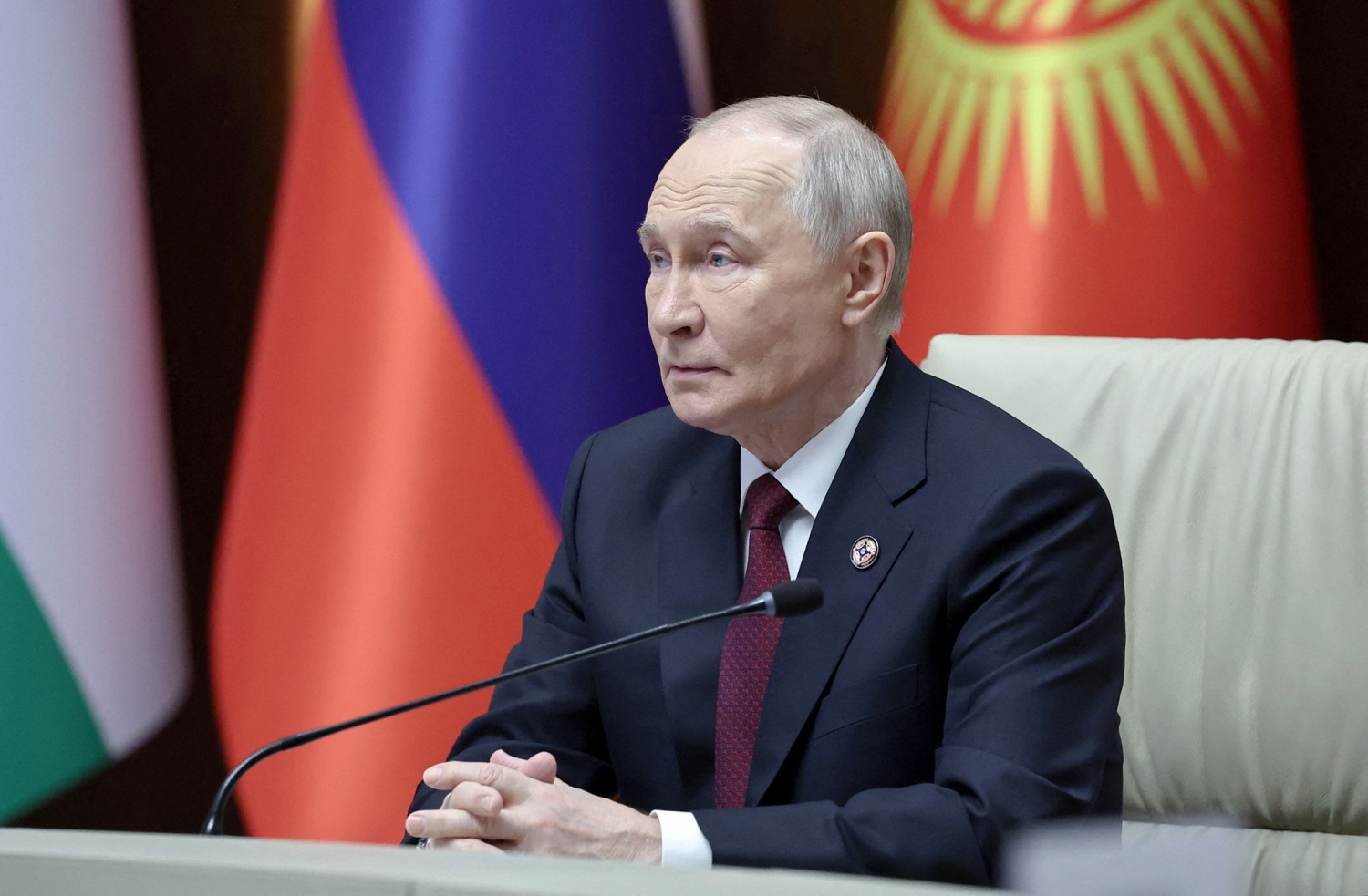
This article is more than
2 year oldPutin’s Pre-Emptive Strike Plan Exposed in Satellite Photos
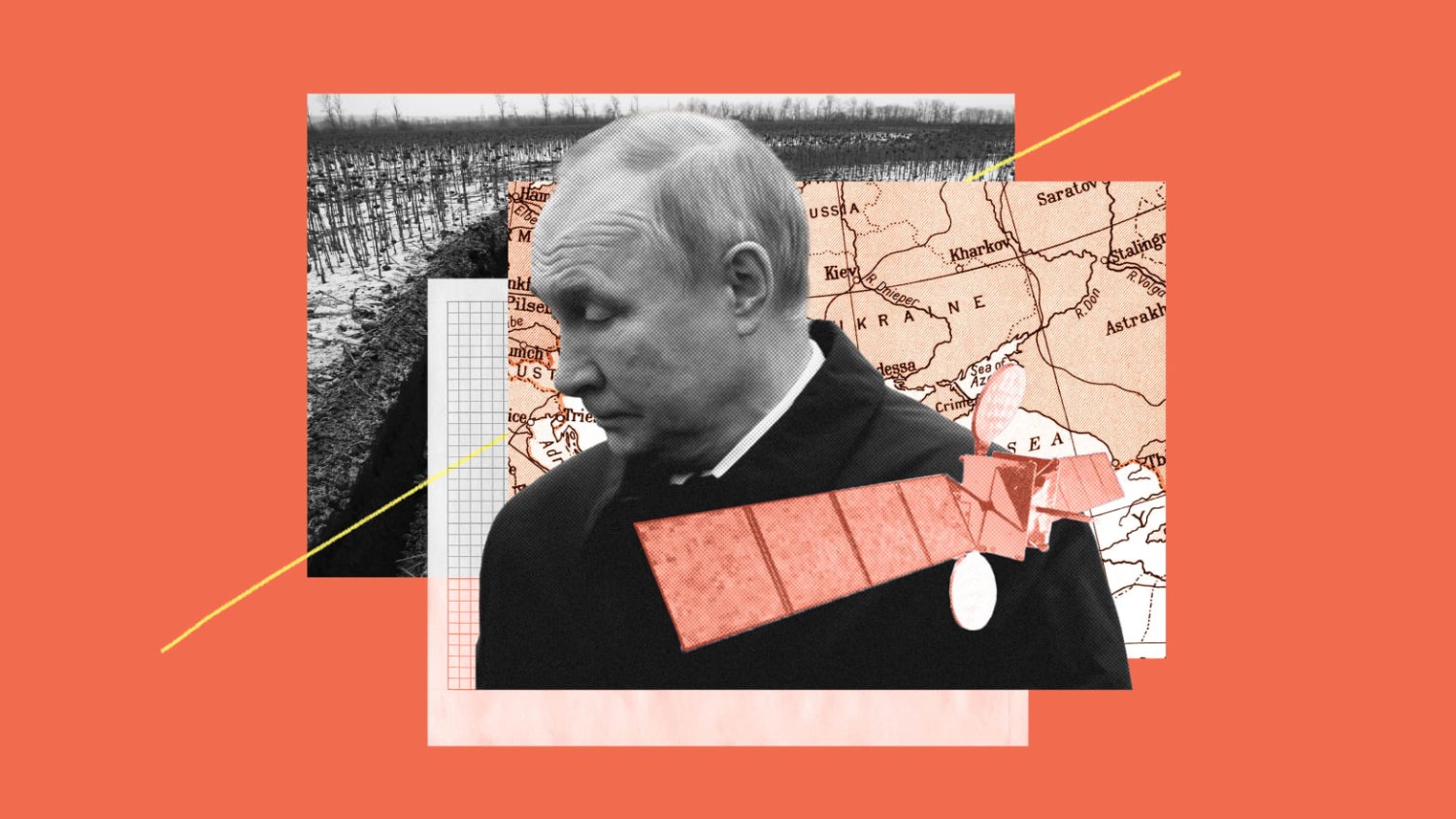
Russia is building up a network of fortifications and trenches along the front in Ukraine, in apparent anticipation of a new round of heavy fighting, according to satellite imagery analysis shared exclusively with The Daily Beast.
The analysis from Brady Africk, an open-source intelligence analyst, shows that Russia is building up fortifications all along the front in Luhansk, from the Russian border down to Donetsk, and throughout Zaporizhzhia and Kherson.
The satellite imagery indicates that Moscow may be on edge about a Ukrainian counteroffensive in the coming weeks—or may even be preparing its own offensive to try to seize more Ukrainian land, nearly one year into the war.
“They’re trying to basically consolidate their gains and keep the parts that they’ve held on to thus far,” Africk, who works at the American Enterprise Institute, told The Daily Beast. “I think it’s definitely both a message to soldiers in Ukraine, and to everyone who might be watching, that they’re going to at least try and stay.”
The recent buildup of fortifications—depicted in an interactive map created by Africk—could indicate Russian forces are worried about losing their hold in those regions, according to William Courtney, a former special assistant to the president for Russia, Ukraine, and Eurasia.
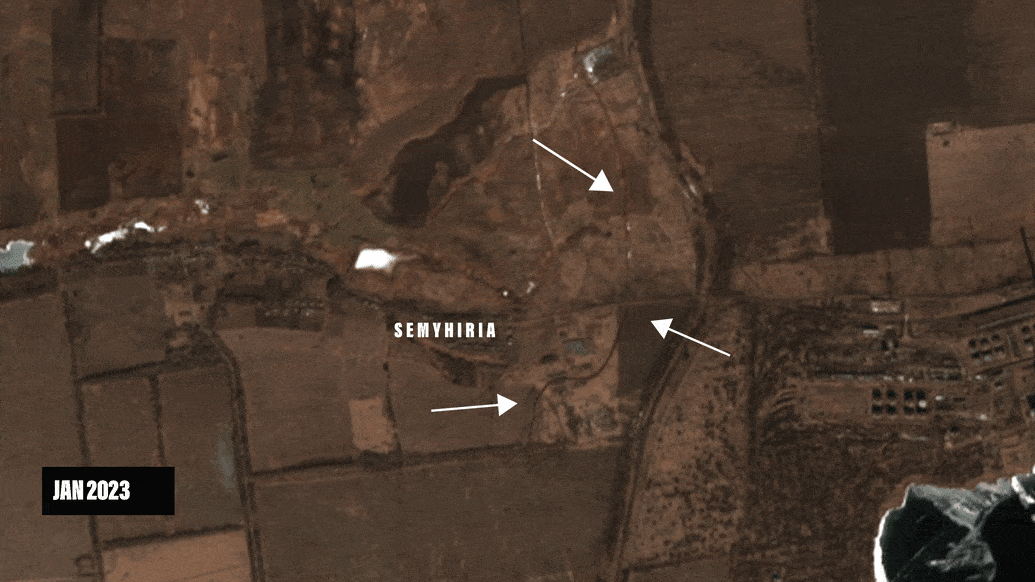
Luis G. Rendon/The Daily Beast/Sentinel Hub EO Browser
“They are expecting counteroffensives, and they know that the West is going to be providing more and better equipment. They know that the West has already provided a lot of artillery which can be used to, if you will, blast away through fortifications,” Courtney told The Daily Beast. “The Russian purpose is to slow Ukraine down and try to stop it where it can,” said Courtney, now an adjunct senior fellow at the nonprofit RAND Corporation.
An analysis from the Institute for the Study of War (ISW) suggests Russia is preparing to be on defense as well.
“Russian forces are clearly concerned to some degree about Ukrainian advances and they want to be able to secure these lines in case of Ukrainian advances,” Karolina Hird, Russia Analyst at the ISW, told The Daily Beast. “The type of defensive fortifications we’re seeing do suggest defensive intent.”
Russia is currently using the cold winter months to regroup, retrain, re-equip, and prepare for next steps in the war after a series of losses to Ukrainian forces last year, according to a White House National Security Council assessment shared with reporters this week. The United States, meanwhile, is helping Ukraine prepare to go on the counteroffensive against Russia, according to White House National Security Council spokesman John Kirby.
“It’s about helping Ukraine defend itself, but also… helping Ukraine be able to go on the offense,” Kirby told reporters this week, in reference to current American aid to Ukraine.
Western nations finally settled on sending modern tanks to Ukraine to help fight Russia just this week after hesitation over fueling and other issues, in what could be a game-changer on the battlefield. President Joe Biden announced Wednesday that the United States would be sending Ukraine Abrams tanks, just as the German government made a similar announcement of its intentions to send Leopard tanks and allow other countries to send German-made tanks to Ukraine.
Some of the Russian fortifications appear primed to throw the Ukrainians off course in an onslaught and “make a Ukrainian advance very stop-and-start,” Africk said. “That’s kind of the main Russian goal—make it really, really, really hard and slow to advance and then use that to try and honestly stop Ukraine from launching counteroffensives.”
Russia has been working on trenches for months, but the latest developments show Russia doubling down and digging in. Compared to an analysis Africk completed earlier this month, the Russians have been adding fortifications in layers to those they had already established. And where there were gaps, the Russians have been constructing or setting up new fortifications, such as trenches and dragon’s teeth—a network of concrete triangles meant to block advances. The fortifications also include barriers, such as mounds that stretch for miles, and anti-tank ditches.
The fortification buildup is sweeping, but there are some areas that can provide clues as to Russia’s game plan. For example, Russia has added multiple layers of fortifications between Bakhmut, which Russian forces have been trying to seize for months now, and Popasna, which is Russian-controlled, according to the analysis.
It could be a sign that Russia is concerned with securing Bakhmut and the areas around it, particularly as Russian mercenary forces from Wagner Group have tried and failed to seize Bakhmut. “That could feasibly be to protect the kind of Bakhmut front line,” Hird said.

Luis G. Rendon/The Daily Beast/Sentinel Hub EO Browser
Ukraine’s government has begun to acknowledge that Russian momentum is building there. Russian forces have been “increasing pressure” in the direction of Bakhmut, Ukrainian President Volodymyr Zelensky said in remarks this week, adding that they “want to increase pressure on a larger scale.”
The buildup could also be a sign that Russia is preparing an offensive itself, according to the Institute for the Study of War.
“Having strong fortified defensive lines also allows Russian forces to be able to potentially use these lines for launchpads for their own offensives… having that sort of security could hypothetically allow the development of a Russian offensive,” Hird said.
There are other indications from inside of Russia that the Kremlin might be preparing a major attack this year. President Vladimir Putin promoted Gen. Valery Gerasimov to his old role commanding Russian forces in Ukraine, in what some analysts see as a step in the direction of building up a more offensive posture. According to an analysis from Ukraine’s Main Intelligence Directorate of the Ministry of Defense, Putin has already ordered Gerasimov to seize all of the Donbas, which includes several of the areas in question in the satellite imagery, by March.
The White House warned this week Russia is gearing up as well.
“You can expect that the Russians are going to pick up the tempo, we have to be ready for that and I know the Ukrainians are famous for that,” the National Security Council's Kirby told reporters this week.
Under Gerasimov’s leadership so far, Russia has begun to shift towards more conventional troops, as opposed to private mercenary fighters from Wagner. Already, Moscow has been transferring Russian troops from training in Belarus to Luhansk, according to an analysis released Wednesday from the Main Directorate of Intelligence of the Ministry of Defense of Ukraine. Other divisions, including airborne forces, have also been deployed to the Svatove-Kreminna line, according to ISW.
A Luhansk offensive “would probably be from the Svatove-Kreminna line—the westward push in an attempt to regain territory in eastern Kharkiv Oblast and potentially northern Donetsk Oblast,” Hird said.
The imagery shows a concerted effort to construct fortifications northwest of Severodonetsk near Pryvillya. The Institute for the Study of War has also been observing activity nearby that could indicate Russia is preparing to either prevent Ukrainian advances into the Luhansk Oblast, or launch Russian forces westward.
“We also have been seeing that Russians may be preparing for some sort of decisive effort, either of defensive or offensive nature, in Luhansk Oblast, which we can kind of see by this very, very strong defensive line that runs all the way down the Luhansk Oblast border essentially, especially on the Svatove-Kreminna line,” Hird said.
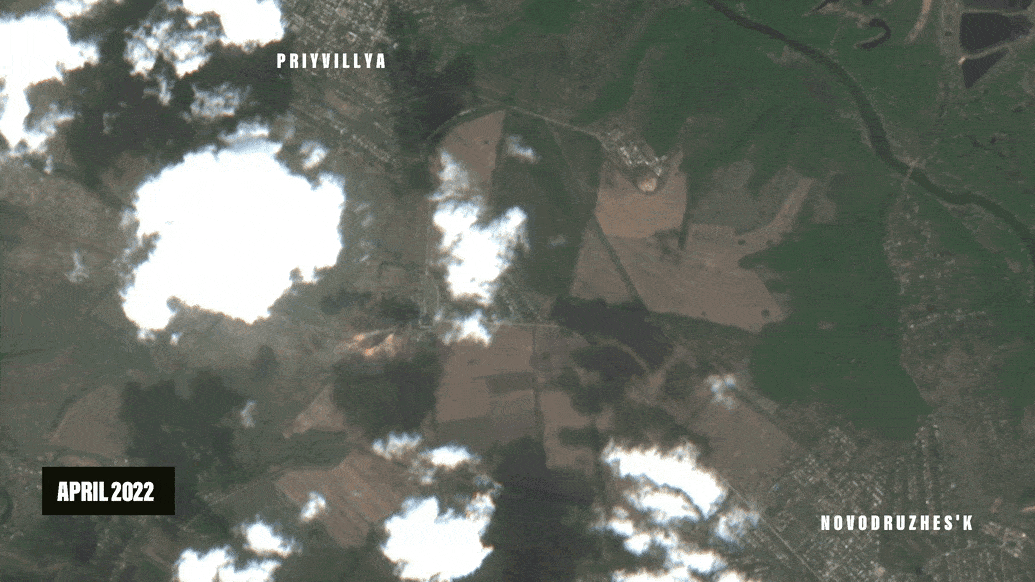
Luis G. Rendon/The Daily Beast/Sentinel Hub EO Browser
The imagery could serve as a predictor for the battles to come throughout eastern Ukraine. The network of fortifications in Luhansk forms straight lines in a pattern “which suggests that the Russians here would like to just halt the Ukrainian offensive in place and hold that line,” Hird said.
In Kherson, the imagery shows a different arc in the story, with multiple layers of fortifications, which could suggest Russia anticipates a slower, perhaps piecemeal, progress.
The exact direction of a potential Ukrainian offensive might be impossible to predict for now. But the development of defensive barriers indicates Russia might be concerned about a Ukrainian onslaught that gets Kyiv closer to taking back Crimea, the Black Sea peninsula Russia illegally annexed from Ukraine in 2014.
“The fortifications being built by Russia would appear to indicate they're worried about it,” Africk said.

